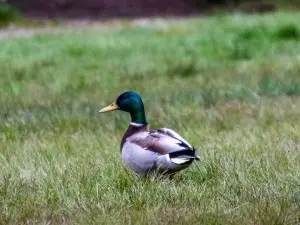
A duck’s outer appearance says a lot about the health of the bird, shiny, bright, and intact feathers are a sign of good health. Feathers that are dull and disheveled are a bad sign.
If your duck’s feathers are starting to look bad you’d be right to be concerned. This article looks into why this may be happening
Table of Contents
Duck feathers look bad:
The health of your bird is of the utmost importance if you want your bird to live a long and healthy life. If your duck’s feathers start to look bad you’d be right to be worried, here are possible reasons why this may be happening:
A molt:
A molt can ruin what was once a beautiful set of feathers. If your bird is molting the bird may seem like it has been partially plucked
All birds molt, molting allows birds to get rid of their old set of feathers, this process also gets them ready for a set of fresh new feathers. But unfortunately, molting isn’t always pretty.
A molting bird will lose chunks of its feathers along its molting journey.
What to do:
Molting is normal and natural to ducks and to all birds. You don’t have to worry if your bird is going through a molt, you should be glad that the bird is successfully going through this process.
You should, however, give your duck space during this time, molting is a painful process for birds.
Pin feathers (developing feathers) grow to replace the bird’s old feathers, which fall out during molting. The growth of pin feathers makes the bird more sensitive, your bird will not want to be handled during this time so leave it alone.
Your duck should be getting all the nutrition it needs at all times, but good nutrition is especially important when the bird is molting.
Give your bird added protein in the form of mealworms, crickets, soldier fly larvae, and worms. All this protein can help during the molting phase, just don’t overdo it with the protein.
Duck plague:
Duck plague is a contagious herpes infection that unfortunately has a high mortality rate. This disease is caused by Anatid alphaherpesvirus 1 (AnHV-1) and can affect not only ducks but geese and swans too.
Birds will catch this disease if they come into contact with contaminated water, a contaminated environment, or if they come in direct contact with birds who have this disease.
This disease can cause your bird’s feathers to look ruffled. Other symptoms of this disease include green-yellow diarrhea, sluggishness, a decrease in egg production, a loss of appetite, droopy wings, increased thirst, and nasal discharge.
What to do:
There is no treatment for this disease, the recommended course of action is to depopulate, relocate healthy birds, and perform intensive disinfection
Vaccinating your birds before they develop this disease is recommended.
Parasites:
Parasites love attacking our feathered friends, ducks included. Parasites like lice and mites can cause damage to your duck’s feathers causing them to look bad.
These parasites may be feeding on the bird’s feathers causing them to look bad, feather mites will do this. Other signs of a mite infestation in your bird include weight loss, decreased egg-laying, lethargy, and dull-looking eyes.
The parasites may also be causing your bird to start to itch. The bird may be scratching itself so much so that the bird is causing damage to its own feathers, making them look bad.
What to do:
Check to see if your bird does in fact have a parasitic infestation. Mites can usually be found around your bird’s vent region or along the bird’s feather shafts.
Using carbaryl on your duck will help rid the bird of its parasite infestation. Parasites can also be treated with powders or sprays that contain malathion or trichlorphon.
You’d also need to thoroughly clean your duck houses to get rid of these parasites.
The bird’s environment:
The bird’s environment may be the reason why the bird’s feathers look bad. Feathers are quite fragile and can tear and become damaged quite easily.
If your bird is having to pass through chicken wire openings, or if your bird is having to move past other openings with rough edges, then the bird’s wings are likely being damaged over time as a result of having to pass through these openings.
What to do:
Keep an eye on your birds and take note of where they go, if you find that your bird is passing through openings with rough edges then you’d need to close the openings and create a new safer opening that doesn’t damage the bird’s feathers.
If you enjoyed this article then you may also be interested in other chicken related articles. Here are some articles that you may be interested in: Duck Swollen Leg, Duckling Died When Hatching, Duck Eggs Not Hatching Day 30

